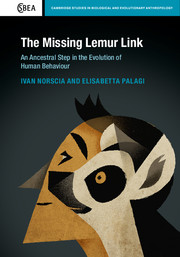Book contents
- Frontmatter
- Dedication
- Contents
- List of contributors
- A message from Jane Goodall
- Foreword
- Preface by the authors
- Acknowledgements
- Part I Communication: from sociality to society
- Part II How conflicts shape societies
- 4 Bossing around the forest: power asymmetry and hierarchy
- 5 Something to make peace for: conflict management and resolution
- 6 Anxiety…from scratch: emotional response to tense situations
- Part III Why lemurs keep in touch
- Part IV Closing remarks
- Looking back to the future – Michael Huffman
- Index
- References
6 - Anxiety…from scratch: emotional response to tense situations
from Part II - How conflicts shape societies
Published online by Cambridge University Press: 05 May 2016
- Frontmatter
- Dedication
- Contents
- List of contributors
- A message from Jane Goodall
- Foreword
- Preface by the authors
- Acknowledgements
- Part I Communication: from sociality to society
- Part II How conflicts shape societies
- 4 Bossing around the forest: power asymmetry and hierarchy
- 5 Something to make peace for: conflict management and resolution
- 6 Anxiety…from scratch: emotional response to tense situations
- Part III Why lemurs keep in touch
- Part IV Closing remarks
- Looking back to the future – Michael Huffman
- Index
- References
Summary
You have probably noticed the ambiguity and vagueness in the use of the word ‘anxiety.’ Generally one means a subjective condition, caused by the perception that an ‘evolution of fear’ has been consummated. Such a condition may be called an emotion. What is an emotion in the dynamic sense? Certainly something very complex.
Sigmund Freud, 1969Stress, anxiety and…evolution
Back in 1872, Darwin, in The Expression of the Emotions in Man and Animals, wrote about emotion expression as the possible result of ‘the direct action of the excited nervous system on the body independently of the will’. In the whole animal world, bodily movements are able to reveal and unveil emotions not apparent otherwise. In humans, gestures, facial expressions and, more in general, non-verbal behaviours are an integral part of how we express our emotions. Emotions include anxiety, which can be linked to fear, motivational conflict, or uncertainty in decision-making (Morgan, 2006).
Defining anxiety is not easy, as also recognised by Sigmund Freud back in 1920 (see the 1969 edition). Linguistically speaking, anxiety is defined as a ‘…feeling of nervousness or worry about something that is happening or might happen in the future’ or, similarly, ‘a feeling of worry, nervousness, or unease about something with an uncertain outcome’. Stress is defined, instead, as ‘great worry caused by a difficult situation, or something that causes this condition’ or ‘a state of mental or emotional strain or tension resulting from adverse or demanding circumstances’ (definitions by Cambridge and Oxford online dictionaries, respectively). From these non-technical definitions, it is possible to infer intuitively that anxiety can be related to stress but also that the difference between stress and anxiety is not clear-cut. Indeed, a plethora of models, theories and hypotheses have been put forth to integrate stress and anxiety into a single framework. However, the behavioural, physiological, psychological and clinical implications of anxiety and stress responses have proven difficult to untangle.
In Homo sapiens, non-human primates and other mammals, anxiety is an emotional state involving tension and/or agitation, with both physiological and behavioural implications (van Riezen and Segal, 1988; Craig et al., 1995; Barros and Tomas, 2002; Bourin et al., 2007). Indeed, anxiety is associated with a characteristic set of behavioural responses, including avoidance, vigilance and arousal, which evolved to protect the individual from danger (Gross and Hen, 2004).
- Type
- Chapter
- Information
- The Missing Lemur LinkAn Ancestral Step in the Evolution of Human Behaviour, pp. 146 - 182Publisher: Cambridge University PressPrint publication year: 2016

